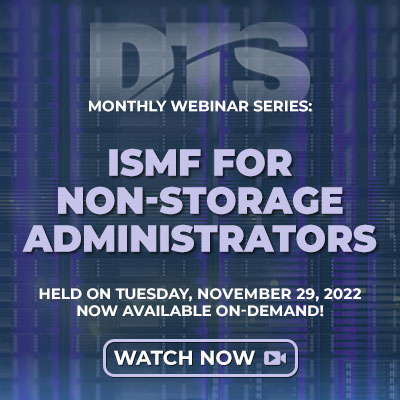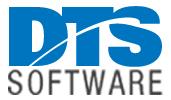DTS Webinar Recap: ISMF for Non-Storage Administrators
As the Agile Manifesto approaches adulthood (it turns 21 this year) it is interesting to note its proliferation into so many facets of life. What started during a meeting of the minds at a resort in Utah is now used by groups ranging from Boy Scout troops to software developers, from marketers to manufacturers. And like most everything, it has evolved over the years.
One of the key principles of the Agile Manifesto is simplicity – the art of maximizing the amount of work not done. This, however, flies in the face of the current trend of “doing more with less.”
News of IT layoffs (big and small) are all too frequent. But the amount of work to be done steadily increases. As IT teams shrink, more of us are wearing a multitude of hats to make sure the job is done.
In the storage management corner of the enterprise software space, it can mean giving non-storage administrators the knowledge to perform tasks that storage administrators might typically be asked to handle. A recent DTS Educational Webinar focused on that very thing.
ISMF for Non-Storage Administrators
ISMF is usually thought of as the “storage administrator’s tool” used to maintain SMS constructs and ACS routines. But there is another, lesser-known side to ISMF available to end users – the Data Set and Volume functions that allow ordinary users to create filtered lists of data sets and volumes for reporting or for commands and CLISTs, along with batch reports based on saved ISMF lists or DCOLLECT output.
In this webinar, presented by DTS CTO Steve Pryor, we provided an overview of these functions along with a practical demonstration of how you can use them in your installation.
What is the Interactive Storage Management Facility?
Simply put, it’s an ISPF application that’s not too difficult to use. Yes, it is mostly used by storage administrators, but as an end-user, there is a lot you can do with ISMF.
End-users can work with datasets, volumes, and SMS constructs to view, list, filter, and extract lists of information from them. The lists, then, can be used in many ways, including saving, reusing, printing, and deleting them. This includes individual datasets, volumes, or everything in the list.
It’s important to note that an end-user can’t alter them, that is the job of the storage administrator, so having access as an end-user is not high-risk.
Examining Datasets and Volumes via ISMF
Examining datasets with ISMF can answer a number of questions, including the names and kinds of datasets on a volume, plus a long list of other criteria, which Pryor introduces during the webinar.
Where does the data come from? Typically, the Catalog, but it can also come from the VTOC, which is where you’d find allocated space, used space, the number of extents and any other information kept in the VTOC but not in the catalog.
Pryor demonstrates how to create or access saved lists in an easy-to-understand way.
Saving Lists
A nice feature of ISMF is the ability to save lists for future reference or use in creating a new list. Lists are saved in the ISMF table. Pryor demonstrates this as well.
How-to Examples and Additional Resources
Like the previous DTS webinars, Pryor includes hands-on examples of ISMF usage for end-users. He also includes information on key reference resources available for those who need it.
Steve makes himself available as an additional resource as well and can be reached at steve@dtssoftware.com.
 Learn More in Our Webinar Available On-Demand
Learn More in Our Webinar Available On-Demand
“ISMF for Non-Storage Administrators?” is a 60-minute informative and educational look at an important topic in the mainframe space. If you weren’t able to attend or would like to review the material presented, you can view it on-demand and download a copy of the slide deck to keep as reference material. Be sure to join us each month for our complimentary webinar series. Go to www.dtssoftware.com/webinars for more information.

